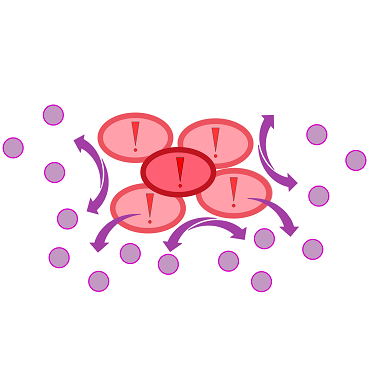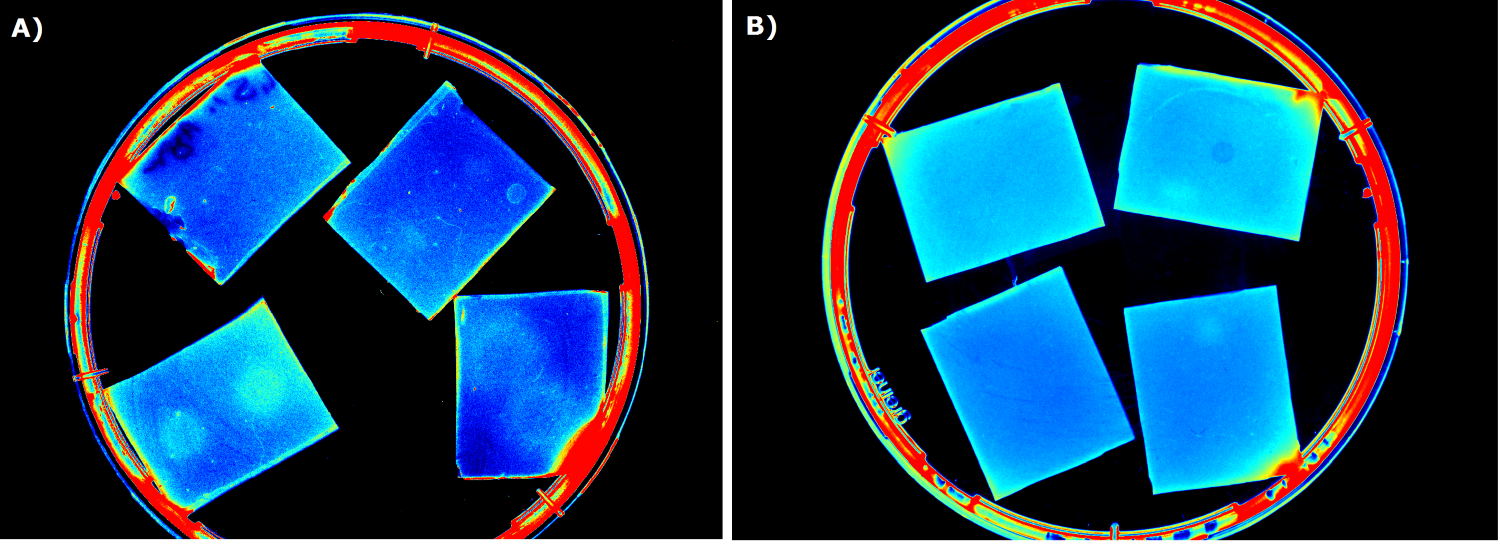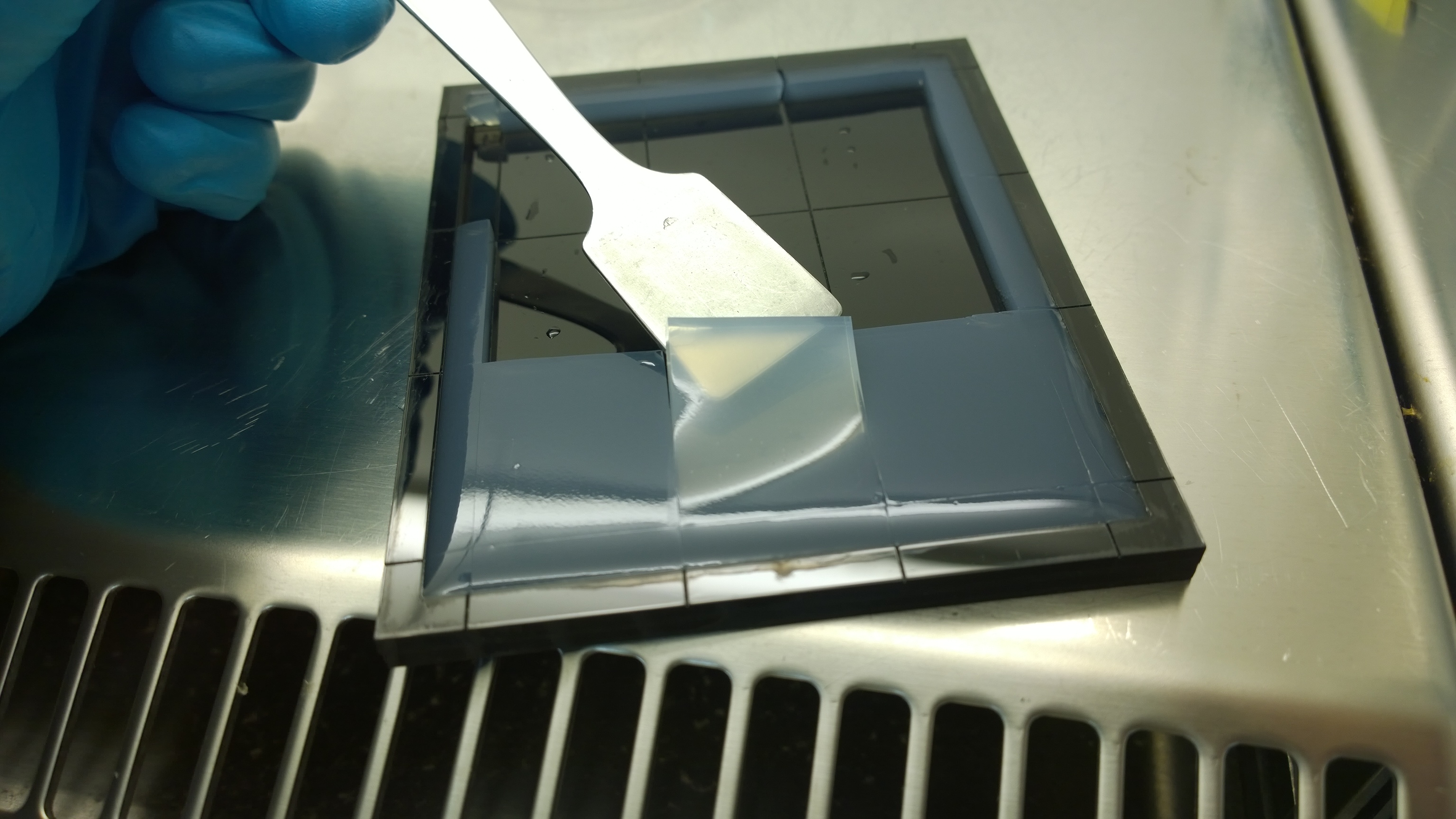Team:Aachen/Project/2D Biosensor
From 2014.igem.org
(→Medium) |
|||
| Line 131: | Line 131: | ||
In our device ''WatsOn'', optimized wavelengths of 450 nm and 480 nm were used for excitation of iLOV and GFP, respectively. When exposed to either excitation wavelength TB medium, which is basically an improved LB medium and highly supports cell growth, showed strong background fluorescence in our own device. High background fluorescence was also observed for TB medum when using the Gel Doc. In contrast to the Gel Doc LB medium showed minimal fluorescence in our device ''WatsOn'' and no difficulties in cultivation of our ''Cellocks'' were observed. Because of the reduced fluorescence compared to TB medium when using ''Watson'' for sensor chip evaluation and because of sufficient cultivation conditions for our 'Cellocks'' LB medium was chosen over TB mediium for sensor chip manufacturing. | In our device ''WatsOn'', optimized wavelengths of 450 nm and 480 nm were used for excitation of iLOV and GFP, respectively. When exposed to either excitation wavelength TB medium, which is basically an improved LB medium and highly supports cell growth, showed strong background fluorescence in our own device. High background fluorescence was also observed for TB medum when using the Gel Doc. In contrast to the Gel Doc LB medium showed minimal fluorescence in our device ''WatsOn'' and no difficulties in cultivation of our ''Cellocks'' were observed. Because of the reduced fluorescence compared to TB medium when using ''Watson'' for sensor chip evaluation and because of sufficient cultivation conditions for our 'Cellocks'' LB medium was chosen over TB mediium for sensor chip manufacturing. | ||
| + | |||
| + | <center> | ||
| + | {| class="wikitable" | ||
| + | ! !! LB !! TB !! M9 !! NA !! HM | ||
| + | |- | ||
| + | | Growth of Cellock || x || x || - || - || - | ||
| + | |- | ||
| + | | Background fluorescence in GelDoc || x || x || - || - || - | ||
| + | |- | ||
| + | | Background fluorescence in ''WatsOn'' || - || x || - || - || - | ||
| + | |} | ||
| + | </center> | ||
Further experiments were conducted to test long-time storage of the sensor chips. Storage at -20 °C resulted in the loss of our sensor cells. Adding 5-10% (v/v) glycerol ensured survival of the sensor cells, but resulted in an expression stop of fluorescence proteins. Thus, the idea of long time storage of the sensor chips had to be passed on. However, it was possible to store ready-to-use sensor chips for 2 days at 4 °C when using LB medium and storage for 5 days was possible with chips made from TB medium. | Further experiments were conducted to test long-time storage of the sensor chips. Storage at -20 °C resulted in the loss of our sensor cells. Adding 5-10% (v/v) glycerol ensured survival of the sensor cells, but resulted in an expression stop of fluorescence proteins. Thus, the idea of long time storage of the sensor chips had to be passed on. However, it was possible to store ready-to-use sensor chips for 2 days at 4 °C when using LB medium and storage for 5 days was possible with chips made from TB medium. | ||
Revision as of 13:57, 17 October 2014
|
|
|
|
|
|
 "
"












